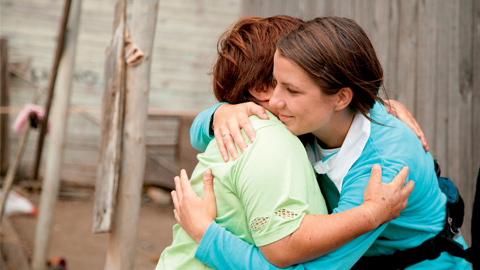
You will learn a lot through your disaster response and recovery efforts. In some cases you will see how problems could have been prevented or how efforts could have been coordinated more smoothly. Church leaders can mitigate these problems in future emergencies by evaluating past disaster relief efforts and making plans for how to improve emergency preparation and response. A few weeks after a Church response to an emergency is complete, local Church leaders should have a review and planning session to prepare for future situations. This meeting could be held in person or by conference call, and it should accomplish two main purposes:
- Review results from this event and record lessons learned.
- Update emergency response plans based on evaluation.
Lessons Learned
The review of relief efforts should cover the following topics:
- Preparation—How prepared were leaders and other members?
- Response and Recovery—What happened that went well, and what were the challenges?
- Needed Improvements—What should be done now to be better prepared?
The following additional topics are provided to prompt responses during the review. They are not intended to restrict the review.
Emergency Response Plans
- Effectiveness of stake and ward plans
- Functionality of initial leadership structure
Early Warning and Notification
- Threat identification (When was the seriousness of the threat identified?)
- Member notification
- Effectiveness of evacuation information and plans
Emergency Communications
- Communication tools utilized and their effectiveness (cell phones, land lines, Internet, etc.)
- Emergency communications specialists
- Most valuable source(s) of information
- Conference calls
- Church leader communication with local government emergency managers
Initial Response Reports for Priesthood Leaders and Church Headquarters
- Methods for collecting information
- Timeliness
- Accuracy
Initial Response
- Missionaries’ and members’ personal needs
- Church and member property
- Help in the community
Church Emergency Operations Center (CEOC; local command center for organizing volunteers and cleanup efforts)
- Need
- Effectiveness
- Staffing
- Leadership
- Headquarters support (technical specialist, etc.)
Emergency Sheltering
- Use of public shelters
- Use of meetinghouses as shelters
- Sheltering in members’ homes
Help from Local Church Operations and Specialists
- Storehouse
- LDS Family Services
- Employment
- Facilities Management
- Public Affairs
- VOAD
Help from Church Headquarters
- Support to local leaders
- Commodities and response supplies
- Facilitating local purchases
- The Area Emergency Preparedness and Response Guide
Cleanup and Volunteer Efforts
- Need for Church volunteers
- Coordination with supporting stakes
- Preparation of volunteers to be self-sufficient
- Volunteer orientation for safety and work
- Work order process
- Equipment, tools, and supplies
- Safety
- Accidents or other incidents
- Volunteer data collection
- Communications among volunteer groups
Government and Community Leaders
- Government agencies
- Community organizations
- VOAD representative